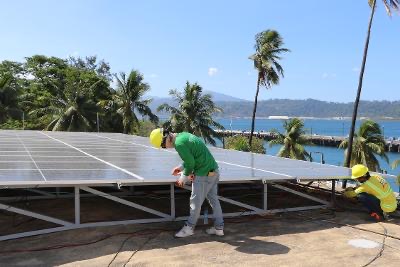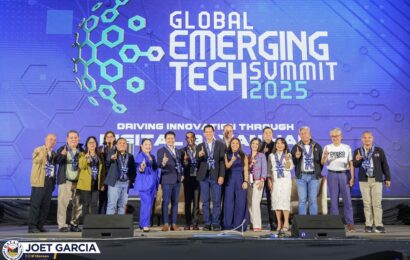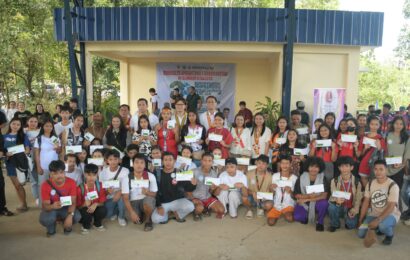
Subic Bay Freeport—The Subic Bay Metropolitan Authority (SBMA) reaped ₱2.96-million savings from using solar power energy from January to December of 2023.
Subic Bay Metropolitan Authority (SBMA) Chairman and Administrator Eduardo Jose L. Aliño attributes these savings to the solar power system (SPS) project that the agency has undertaken as early as 2017.
“We are grateful that this renewable energy project saves a lot for the agency. With this, the agency could now just focus on important financial obligations,” he said.
Aliño added that the SBMA is currently reaping benefits from the solar power system projects in six areas, namely: Malawaan Park, Bldg. 229, Bldg. 255, Bldg. 662, Regulatory Bldg., and the Remy Field.
“Especially now that the weather is scorching hot, we need to protect our employees from heat stroke, and it will not cost us a single centavo because we are now harvesting from these solar power system,” Aliñoadded.
According to Engr. Eddie Ventura, SBMA Telecommunications Department officer-in-charge, this projectwas established in compliance with Republic Act 9513 or the Renewable Energy Act of 2008, an act promoting the development, utilization and commercialization of renewable energy resources and for other purposes.
Ventura shared that for Remy Field, which started only in March 2023, and consumed 76,663 KWh at 9.3882/KWh, the SBMA saved ₱719,727.58. Also, in Bldg. 255, which consumed 70,475.55 KWh from January to October 2, savings amounted to ₱661,638.56. However, the system was temporarily shut down to give way for the building’s roofing rehabilitation project.
For the Regulatory Bldg., a savings of ₱652,386.02 was reaped from the 69,490KWh consumption; while the 52,434.43KWh consumption at the Bldg. 662 translates to ₱492,264.92 savings. Also, ₱439,680.76 was also saved from 46,833.34KWh consumption at the administration building.
Ventura recalled that the SPS project started in 2017 as a result of an external seminar on SPS conducted by Institute of Electronics Engineers of the Philippines (IECEP)-Zambales Chapter that electronics engineers attended.
Then Telecommunications Department manager, the late Engr. Joey A. Lacanlale, assigned Engr. Jefferson B. Llantada of the department’s Projects and Technical Services Division (PTSD) to do a research and use solar powered lightings in Malawaan Park.
Later on, an experimental 10-Kw Grid Tied SPS at Regulatory Building was done in 2018 and was successful. Hence, the department pursued more SPS projects spearheaded by Engr. Antonio G. Rafanan.
Ventura added that the solar power system project was implemented, primarily, to save on power consumption expenses and sell its excess energy to the Electric Cooperative; to comply with the green initiative, which is an effort to reduce pollution and waste, conserve resources and maintain an ecological balance, and the Power Savings Program; and also to promote sustainable development.
Meanwhile, Rafanan explained that with the SPS project, the agency not only reduced the use of non-renewable resources of energy, it is also started selling unused harvested power back to the grid in 2022.
He said that the Grid-Tied and Hybrid systems were also configured and applied to use net-metering, which is another source of savings for the agency aside from consuming harvested solar power.
The SPS project cost amounted to ₱22,643,760.83 in total. This includes ₱400,892.86 Off-Grid system in Malawaan Park, which started in 2017; ₱3,493,000 Grid-Tied in Regulatory Building, which started in 2018 at 10KW, then upgraded to 50KW in March 2022; ₱6,854,000 Grid-Tied in Bldg. 229 and Bldg. 255, as well as ₱3,095,000 Grid-Tied in Bldg. 662, all of which started in March 2022; and ₱8,800,867.97 Hybrid system in Remy Field, which started only in March 2023.





